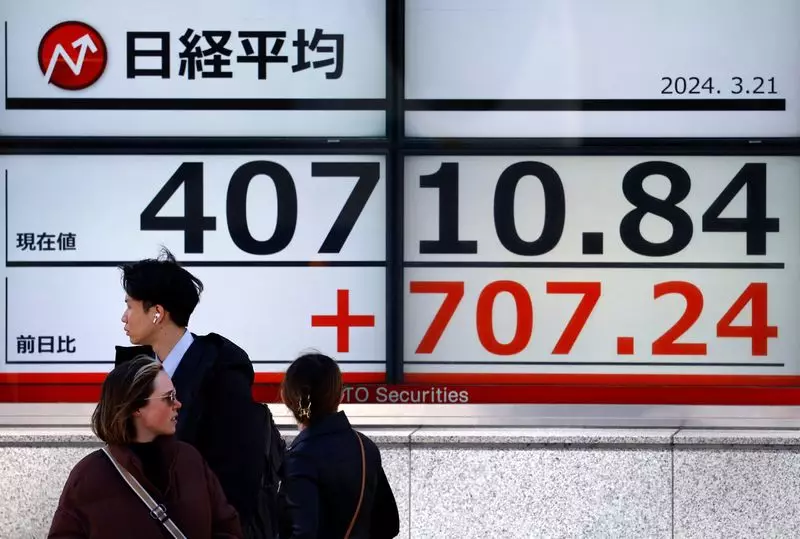The recent retaliatory attack by Iran on Israel has sent shockwaves through global markets, impacting various asset classes. This attack marked the first direct assault on Israeli territory by Iran, raising concerns of a broader regional conflict. The fear of open warfare between the two arch Middle East foes has left the region on edge, leading to a flight to safety among investors.
In response to the escalating tensions, Asian shares slumped, with Japan’s Nikkei falling more than 1% and Australia’s S&P/ASX 200 index losing 0.6%. The Hang Seng Index in Hong Kong also slumped by 0.8%. These reactions reflect the uncertainty and risk aversion prevailing in the market due to the geopolitical turmoil.
The rise in geopolitical tensions has also led to a surge in gold prices, as investors seek safe-haven assets amid the uncertainty. Gold prices rose by 0.51% to $2,356.39 an ounce, highlighting the market’s flight to safety. In contrast, oil prices remained relatively stable, as traders had already factored in the possibility of a retaliatory attack from Iran.
The conflict in the Middle East has had implications for U.S. Treasury yields and the dollar. Traders have adjusted their expectations of rate cuts from the Federal Reserve this year, with the benchmark 10-year yield standing at 4.5277%. The dollar, on the other hand, reached a 34-year high against the yen, reflecting growing expectations of higher interest rates in the United States.
The uncertainty surrounding the geopolitical situation in the Middle East has increased market volatility and raised concerns about the future path of global markets. With the potential for a broader regional conflict looming, investors are closely monitoring developments and adjusting their portfolios accordingly. The upcoming speeches by Fed policymakers, including Chair Jerome Powell, are expected to provide further clarity on the future direction of U.S. interest rates.
The recent escalation of tensions in the Middle East has had far-reaching impacts on global markets. The heightened uncertainty and risk aversion among investors have led to significant fluctuations in asset prices, with safe-haven assets like gold gaining favor. The evolving geopolitical situation underscores the interconnectedness of global markets and the need for investors to stay vigilant in the face of geopolitical risks.

